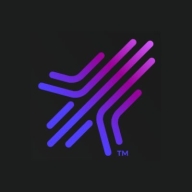

Nintex Process Platform and Rocket Zena are workflow automation solutions, each offering distinct advantages. Nintex is favored for its extensive features and flexibility, while Rocket Zena gains attention for its simplicity and affordability, making it suitable for budget-conscious businesses.
Features: Nintex Process Platform offers advanced process automation, robust integration capabilities, and an extensive template library to optimize complex workflows. Rocket Zena, on the other hand, features a user-friendly interface, streamlined workflow designs, and efficient task management, which are ideal for straightforward operations.
Room for Improvement: Nintex Process Platform could enhance its deployment simplicity and reduce overall costs to appeal to a wider market. Meanwhile, Rocket Zena may benefit from expanding its feature set, improving customization options, and offering advanced integration capabilities to better handle complex processes.
Ease of Deployment and Customer Service: Rocket Zena stands out with its quick deployment and responsive customer support, making it a strong choice for rapid implementations. Nintex Process Platform requires a more detailed set-up and training process but compensates with comprehensive support for ongoing use.
Pricing and ROI: Nintex Process Platform tends to incur higher initial costs, justifying this through robust functionalities that deliver significant ROI in complex scenarios. Rocket Zena appeals with its cost-effective pricing, providing a reliable return for simpler applications, ensuring financial accessibility for businesses focusing on budget management.
| Product | Market Share (%) |
|---|---|
| Nintex Process Platform | 0.3% |
| Rocket Zena | 2.5% |
| Other | 97.2% |


| Company Size | Count |
|---|---|
| Small Business | 17 |
| Midsize Enterprise | 6 |
| Large Enterprise | 24 |
| Company Size | Count |
|---|---|
| Small Business | 3 |
| Large Enterprise | 6 |
Nintex Process Platform offers no/low-code development with system integrations and efficient workflow management, ideal for complex business processes. It's known for its scalable workflows, data management through SmartObjects, and a user-friendly visual designer.
Nintex Process Platform enables organizations to automate processes with ease, supporting electronic forms, digital transformation, and seamless department collaboration. Users on SharePoint and other integrated systems leverage its extensive workflow capabilities for approvals, onboarding, and information capture. While its current framework might benefit from performance enhancements and improved management console usability, it remains a strong choice for providing scalable solutions across industries.
What are the key features of Nintex Process Platform?Companies in sectors like government, HR, and financial services implement Nintex Process Platform for its ability to streamline and connect internal processes. It supports approval workflows, notifications, and data capturing, proving its versatility for diverse business needs. However, challenges with document conversion, performance, and cloud feature parity suggest room for enhancements, particularly in industries handling complex workflows.
Rocket Zena offers scheduling and dependency mapping, intuitive interface, and containerized deployment. It simplifies workflow automation, enhancing efficiency across platforms.
Rocket Zena's strengths lie in its scheduling capabilities, graphical interface, and efficient deployment. It supports users in task management with cross-platform scheduling, streamlining repetitive tasks through automation. The web-based client facilitates process visualization and workflow management, while the notification system enhances task handling. Users can manage mainframe, Linux, and Windows environments while integrating with SAP and Oracle, ensuring comprehensive automation and efficient job execution.
What are the key features of Rocket Zena?In industries like finance and manufacturing, Rocket Zena plays a vital role in scheduling batch jobs and automating file transfers. It helps adapt task scheduling to business calendars and integrate with existing platforms, ensuring a smooth workflow that meets business objectives.
We monitor all Workload Automation reviews to prevent fraudulent reviews and keep review quality high. We do not post reviews by company employees or direct competitors. We validate each review for authenticity via cross-reference with LinkedIn, and personal follow-up with the reviewer when necessary.